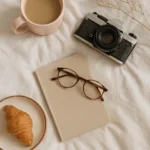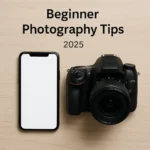
Best Free Copyright-Free Image Sources for Bloggers (2025 Guide)
If you’ve ever spent hours writing the perfect blog post but struggled to find the right image—you’re not alone. Good visuals make your blog more engaging, professional, and even help you rank better on Google. But grabbing any photo from the internet? That’s a risky move.
Let’s talk about where to find stunning, free, copyright-safe images that you can use without worrying about legal trouble or AdSense rejection.
🚫 Why You Should Never Use Random Google Images
You might think, “It’s just a photo, who’s going to notice?” But here’s the truth: many images you see on Google are copyrighted. Using them without permission can lead to takedown notices, AdSense disapproval, or even legal fines.
When I first started blogging, I made this mistake. I used a beautiful city skyline photo I found on Google, only to receive a copyright warning a month later. Lesson learned. Since then, I’ve only used images from trusted sources.
🧾 Know Your Image Licenses
Before downloading any photo, make sure you understand what the license allows. Here are the most common types:
- CC0 (Creative Commons Zero) – Use it however you want, no credit needed.
- Royalty-Free – Free to use, but some may need attribution.
- Public Domain – No restrictions at all.
✅ Tip: Even on “free” websites, check the license for each image. Things can vary.
📸 10 Best Free Image Websites for Bloggers (2025)
1. Pexels
A go-to for many bloggers. You’ll find modern, high-quality images and even free videos. No attribution required. Their collections make it easy to find seasonal or trending topics.
2. Unsplash
Known for artistic and professional-looking photos. Whether you need a minimalist workspace, a travel photo, or something abstract, Unsplash usually has it.
I’ve used Unsplash for years. Their photos often feel like magazine-quality, yet you can use them for free—even for commercial projects.
3. Pixabay
Not just photos—Pixabay also offers illustrations, music, and videos. If you’re looking for icons or vector art along with your blog visuals, this is a solid pick.
4. Freepik
Especially helpful if you’re running a design-heavy blog. It has vectors, infographics, and editable files (like PSDs). Many images are free with credit; a paid version removes that requirement.
5. Reshot
Looking for images that don’t look like “stock” photos? Reshot is great for creative bloggers. The vibe here is raw, real, and modern—great for lifestyle and personal branding.
6. RawPixel
Offers a mix of free and premium photos, plus templates, illustrations, and even AI-generated content. Their “Public Domain” section is fully free for any use.
7. Burst by Shopify
Created for online stores, but also great for bloggers who focus on business, productivity, or e-commerce. Their “collections” are super niche-friendly.
8. FOCA Stock
Includes free photos, videos, and templates. Plus, they offer small tools like a color palette builder and resizer—handy if you’re working on branding.
9. Life of Pix
If you love cityscapes, nature, or street photography, this site is gold. High-res photos submitted by photographers, and new ones drop weekly.
10. StockVault
Not as famous, but very useful if you need textures or backgrounds—like brick walls, marble surfaces, paper textures, or abstract graphics.
🛠️ Free Tools to Edit & Optimize Your Images
Once you download an image, you may want to resize, compress, or add a little branding. These free tools can help:
- Canva – Great for designing blog banners, thumbnails, and Pinterest pins.
- Photopea – A free browser-based alternative to Photoshop. Surprisingly powerful.
- TinyPNG – Compress images without killing the quality.
- Remove.bg – Instantly deletes backgrounds from portraits or products.
- iLoveIMG – Offers cropping, resizing, converting, and watermarking tools.
✅ How to Use These Images Safely
- Always double-check the license—every image might have different rules.
- If credit is required, add something like: Photo by Jane Doe on Unsplash.
- Don’t sell or redistribute the image as-is.
- Resize or customize the photo before uploading—helps with branding and SEO.
🔍 Optimize Your Images for SEO (Yes, It Matters)
Your image can help your blog rank better if it’s optimized. Here’s how:
- Rename the image: Use keywords (e.g.,
colorful-vegan-salad-bowl.webp) - Compress the size before uploading
- Add ALT text describing the image clearly
- Use WebP format for faster loading
- Place images near relevant text on the blog
📢 AdSense Warning: Copyright Matters
Google AdSense is strict. If your site uses images that aren’t properly licensed, they can reject your application or suspend your account. Stick with trusted sites like Pexels, Unsplash, and Pixabay to stay safe.
Also, make sure your images are appropriate and family-friendly—this impacts your ad performance too.
💡 Bonus Tip: Create Your Own Visuals
Want to stand out? Try creating your own images using your phone or AI tools. I’ve started doing this for certain posts, and Google seems to love original content. Plus, nobody else has your exact photo—instant uniqueness.
Final Thoughts
You don’t need to spend a dime to make your blog look stunning. These free, copyright-safe image sources are perfect for bloggers in 2025 who want to look professional, stay compliant, and keep their SEO game strong.
Whether you’re writing a food blog, travel stories, how-to guides, or tech tips—there’s a free image out there waiting to bring your post to life.
Start bookmarking your favorite sites now and build a library of go-to images for your content. Trust me—your blog (and your readers) will thank you.

